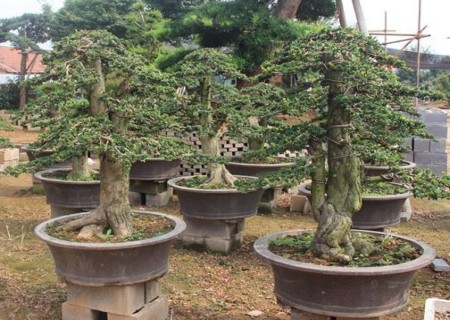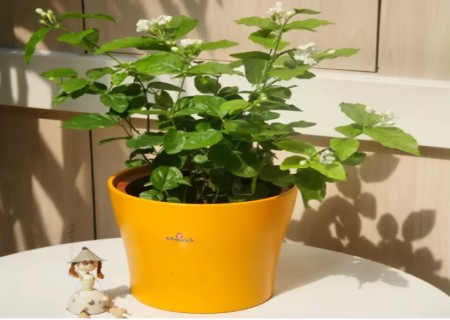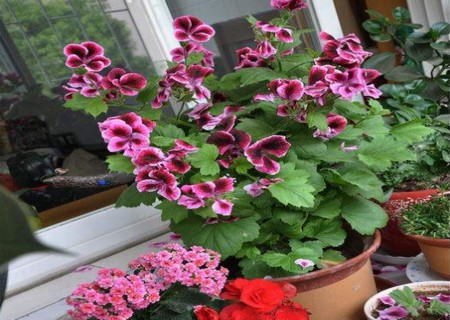How to raise and maintain the bonsai of Phoebe angustifolia
Phyllanthus angustifolia has great ornamental value, and it is also suitable for the cultivation of modeling trees. it is a good garden plant and can be used as hedges and bonsai trees. Chinan likes high temperature, high humidity and plenty of sunshine, so it is better to keep it in full sunshine or half-day place, but there are not many roots in the shady and humid place for a long time, the tree is weak and it is difficult to survive the winter.
Now let's take a look at how to raise Chinan. The maintenance of Cunninghamia lanceolata can follow the following practices:

1. Leaflet red from April to June should be placed in a place with plenty of sunshine and rain, and the basin soil should always be moist, and there should be no shortage of water at ordinary times. once there is a shortage of water, it will lose branches, and all the heavy piles will die.
2. Loose basin soil or medium should be used, and the PH planting of basin soil should be maintained at 5m / m / 6.
3. Attention should be paid to maintaining humidity. At present, the watering of potted plants which are common in some materials should be dry and wet, and it is not suitable to be used in the maintenance of alpinia chinensis.
4. Cunninghamia lanceolata can turn the basin and change the soil once every 3 to 4 years, and the suitable time is early April. At the end of soil change, pour water thoroughly, put it in a shady place, keep it moist, and wait for the new shoot to grow in a place with plenty of sun, rain and dew to promote its growth.
5. According to the principle of "no dry, no watering, no watering". The new pile should be kept moist and should not be short of water, and the formed Phoebe angustifolia plant should not be too dry in autumn to prevent a large number of fallen leaves. In winter, before the arrival of the cold wave, we should ensure sufficient moisture and not dry freeze.
6. Cunninghamia lanceolata likes fertilizer, but can not apply thick fertilizer to prevent excessive concentration and rotting roots. The new pile does not need fertilization in the first year. From the second year, depending on the growth of the plant, organic fertilizer is applied every half a month or a month in the growing season. If there are fruits, it is necessary to increase the density of fertilization. When thin fertilizer is applied frequently, mainly nitrogen and potassium fertilizer, combined with trace elements mixed with water, old trees can spray more foliar fertilizer.
7. Potted plants should not be allowed to blossom and bear fruit. Flowering and fruiting not only consumes more nutrients, but also easy to cause branch aging, serious can cause whole plant failure. To avoid flowering, we can start from two aspects: controlling fertilization and adjusting pruning methods.
8. It is appropriate to store branches in a certain degree, not to grow too long. There is a method of pruning, it is appropriate to use the method of thinning and storing branches, and cutting pieces to keep branches. It is not suitable to use the method of trunk cutting and branch storage, if the method of stem cutting and branch storage is adopted, the thickness of livestock branch should not exceed 1 cm, and it is better to have branches or leaves on the inside after cutting the stem. The cutting rod must be sealed and more foliar water should be poured. It is not suitable to use the binding method. If it must be tied, the stitches must be removed in advance, otherwise it is easy to cause branch shrinkage. When re-cutting, you should choose from January to May, and try to avoid pruning in August and September.
9, the small leaf red Nan bonsai is easy to appear white slime mold harm twig in autumn, can scrape off white slime mold with bamboo, and let bonsai bask in the sun more, generally can prevent and cure.
Chinan is the mainstream variety of bonsai lovers. As long as you choose good, healthy stumps and proper conservation, Chinan bonsai can last forever and be absolutely beautiful. May colleagues in the bonsai industry work together to make Chinan another bright spot in the bonsai industry!
The solution to the yellowing of leaves in Phoebe angustifolia:
One is to pour out the sand in the basin and make organic matter from newly installed organic fertilizer, which is best when plant straw is rotten and animal manure and sand are mixed together.
The second is to buy compound fertilizer to water fertilizer, with compound fertilizer mixed with water at 1:10, watering three times.
Cunninghamia lanceolata is mostly clustered with strange roots, which can be used to replace dry stakes. After the stump is dug back, the injured roots are cut off, and the bottom is sawed at one time according to the requirements of bonsai. The old pile has a peculiar shape, strong vitality and long life, even if the tree is hollow and full of holes and sores.
Time: 2019-05-31 Click:
- Prev

Potted jasmine cultivation methods and precautions
Jasmine flowers of evergreen shrubs have green leaves, white colors and strong fragrance, which are common garden and potted ornamental fragrant flowers; potted plants are used for decoration, elegant and pleasant, and can also be processed into garlands and other decorations; while most of deciduous vines are yellow and fragrant white flowers.
- Next

When does butterfly plum blossom? What if it doesn't bloom?
Butterfly plum belongs to the family Viola, which is a common perennial herbaceous flower, which is mostly cultivated for 2 years. Usually each flower is (or purple), yellow and white, so its scientific name is pansy. The flowers of the butterfly plum are symmetrical on both sides, and the petals below have a distance extending backwards. The whole flower resembles a butterfly that spreads its wings, and the potted plants are placed indoors.
Related
- Fuxing push coffee new agricultural production and marketing class: lack of small-scale processing plants
- Jujube rice field leisure farm deep ploughing Yilan for five years to create a space for organic food and play
- Nongyu Farm-A trial of organic papaya for brave women with advanced technology
- Four points for attention in the prevention and control of diseases and insect pests of edible fungi
- How to add nutrient solution to Edible Fungi
- Is there any good way to control edible fungus mites?
- Open Inoculation Technology of Edible Fungi
- Is there any clever way to use fertilizer for edible fungus in winter?
- What agents are used to kill the pathogens of edible fungi in the mushroom shed?
- Rapid drying of Edible Fungi

